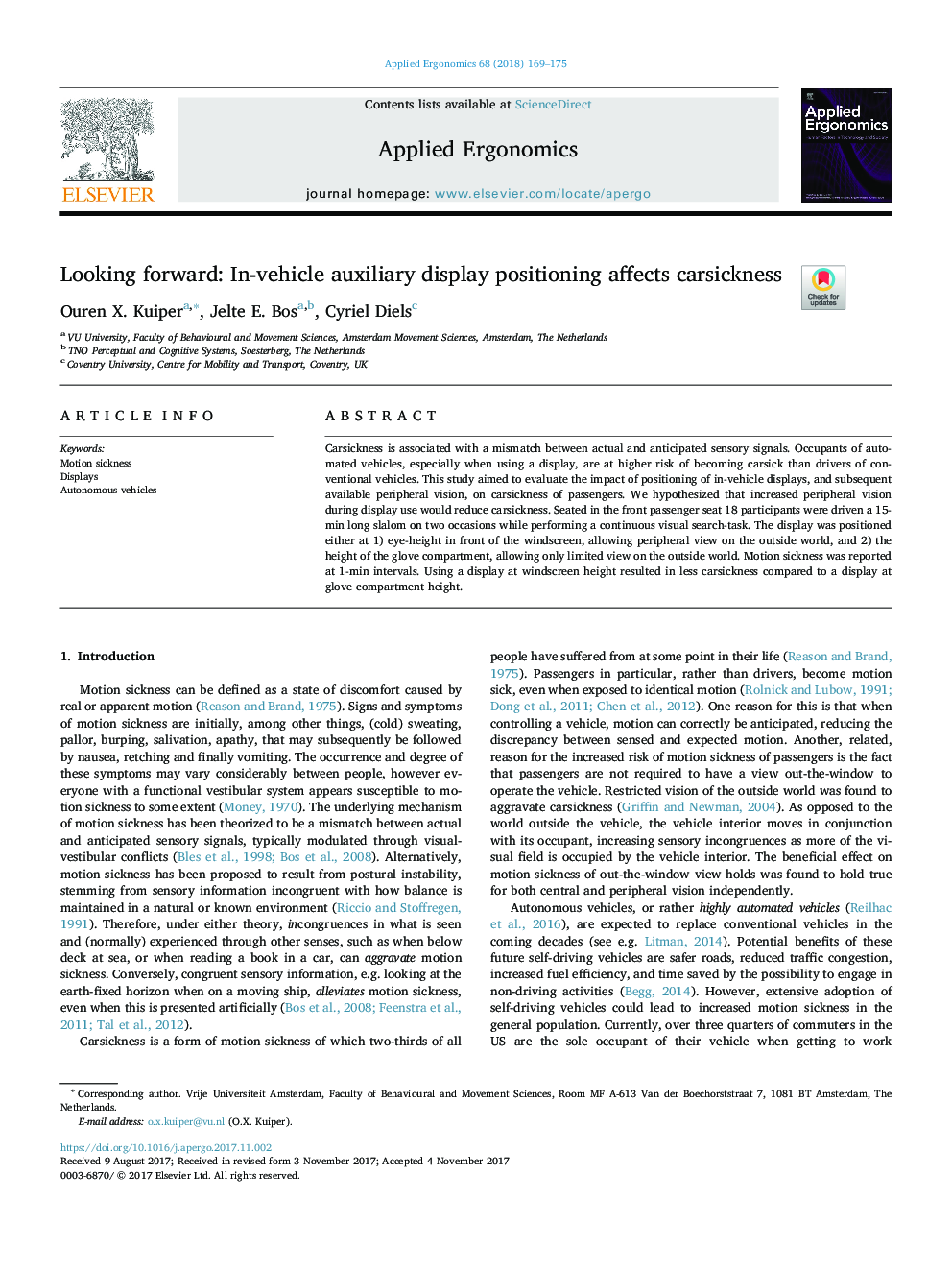| Article ID | Journal | Published Year | Pages | File Type |
|---|---|---|---|---|
| 6947684 | Applied Ergonomics | 2018 | 7 Pages |
Abstract
Carsickness is associated with a mismatch between actual and anticipated sensory signals. Occupants of automated vehicles, especially when using a display, are at higher risk of becoming carsick than drivers of conventional vehicles. This study aimed to evaluate the impact of positioning of in-vehicle displays, and subsequent available peripheral vision, on carsickness of passengers. We hypothesized that increased peripheral vision during display use would reduce carsickness. Seated in the front passenger seat 18 participants were driven a 15-min long slalom on two occasions while performing a continuous visual search-task. The display was positioned either at 1) eye-height in front of the windscreen, allowing peripheral view on the outside world, and 2) the height of the glove compartment, allowing only limited view on the outside world. Motion sickness was reported at 1-min intervals. Using a display at windscreen height resulted in less carsickness compared to a display at glove compartment height.
Related Topics
Physical Sciences and Engineering
Computer Science
Human-Computer Interaction
Authors
Ouren X. Kuiper, Jelte E. Bos, Cyriel Diels,
